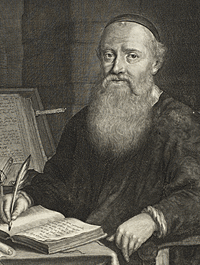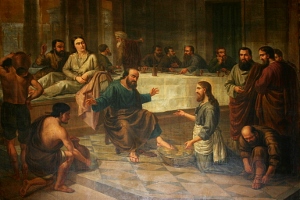Latest Posts

I wrote this piece on my blog for The Mennonite back in October 2012, but never got around to posting it here. I finished up my role of interim assistant director at Christian Peacemaker Teams 5 months ago and I have moved back to doing web site building. However I continue to ponder the themes in this post.
In September I accepted a position as interim assistant director with Christian Peacemaker Teams (CPT). This role comes as a bit of a surprise, for a number of reasons.
As regular readers of the blog know, I’ve been outreach coordinator with CPT for four years now and I’ve thrived in the role. I love meeting with new people and connecting them with CPT’s work. I like coming up with creative initiatives and following them through to their conclusion. I’ve walked with all our teams in the process of finding a new mission, vision and values (and soon, a new logo). I like working with changing teams of people to accomplish shared tasks together. But I’ve never been comfortable with the term “administrator,” or the “A word” as I like to think of it. I’ve always preferred “coordinator” or “organizer” to describe my work.
But then it happened. I was sitting with Rod Stafford, long-time pastor at Portland Mennonite. We were talking through logistics of their church hosting Peace, Pies and Prophets in January. “There aren’t many peacemaker administrators out there.” he said, “I wish there were more.” And then the conversation went on.
(more…)
TimN
January 14, 2015
Administration, Institutions, Power
Read more >

In the new issue of Mennonite Quarterly Review, five essays look at John Howard Yoder’s systematic project of sexual harassment and abuse of women. Unless otherwise noted, the articles named below are part of the issue.
Rachel Waltner Goossen’s essay “‘Defanging the Beast’: Mennonite Responses to John Howard Yoder’s Sexual Abuse” is the most extensive of these pieces. It is the result of an in-depth year-long study using previously inaccessible files. Her piece makes clearer then ever institutional complicity with Yoder’s abuse, starting in the late 1970s through the four year attempt to rehabilitate him that ended in 1996:
“As Marlin Miller and other Mennonite leaders learned of Yoder’s behavior, the tendency to protect institutional interests–rather than seeking redress for women reporting sexual violation–was amplified because of Yoder’s status as the foremost Mennonite theologian and because he conceptualized his behavior as an experimental form of sexual ethics.”
I’ve argued previously that this complicity continued up through the summer of 2013. At the time I asked “How do we develop a theology of power that give us ears to hear the voices of those marginalized and eyes to see the way we participate in their marginalization?”
(more…)
TimN
January 5, 2015
Institutions, Mennonite Church USA, Power, Sexism, Uncategorized
Read more >

This is the final post in my three-part series comparing Seventh-day Adventists and Anabaptists. Please see the introduction to Part 1 if you have not yet read it.
Part 1 looked at expectations about God. Part 2 considered expectations of Christians and the Church. Part 3 will look at our common expectations for the world. Since I know many Adventists are reading this series along with YAR’s regular readers, I hope it has helped each faith community understand the other a bit more. Naturally, there is still much to learn about each tradition beyond the similarities covered here.
Before beginning the final comparison, Tim invited me to make a few observations about the CBS television program that was the catalyst or spark for this series–“World Religions: Sikhs, Seventh-day Adventists, and Mennonites” (description, video, schedule). One of the few common features between the three faith communities is that to varying degrees we are outsiders to American culture or society. We struggle with how to be true to our faith’s demands about being different and somehow separate while still engaging and influencing society. To use a decidedly Christian phrase, How is an adherent of one of these traditions to be in the world but not of it?
The first thing that surprised me about the program was how short it was. With a mere 27 minutes divided between the three faiths, only the most basic information could be conveyed. At its best, the program may pique one’s interest, leading to more study. Hopefully no one turns off their TV or closes their web browser after watching it and says, “Now I understand the ___.” They would be mistaken.
(more…)
Jeff Boyd
December 17, 2014
Seventh-day Adventist Church, Torture
Read more >

This is the second in a three-part series comparing Seventh-day Adventists and Anabaptists. The CBS television program “World Religions: Sikhs, Seventh-day Adventists, and Mennonites” (description, program, schedule) provided the motivation for this series. Please see the introduction to Part 1 if you have not yet read it. As I explain in the introduction, this project was initially designed as a way for Adventists to learn about Anabaptist views, rather than the other way around as in this present series.
One additional item I probably should have acknowledged in Part 1 is that this approach may make it appear as though I believe early Anabaptism was uniform, with all believers under that label holding all particulars in common. This was certainly not the case, as readers of this blog know quite well (see the YAR “Anabaptist Streams” series, for example). A more detailed study would note the similarities and differences between the various Anabaptist groups and then compare these with Adventism. However, that approach is well beyond my ability to adequately pull off, so I will continue with the much simpler and less precise comparative methodology I used while taking Anabaptist History and Theology at AMBS.
Part 1 was lengthy because of the extended series introduction. This second installment is long because it covers several expectations about Christians, both individually and collectively. With that warning, let’s get to it. And again, I ask for patience with the lengthy quotes.
Part 2–Expectations of Christians and the Church
Both Anabaptists and Adventists expect believers to (a) voluntarily unite, (b) follow after Jesus in discipleship, (c) be baptized, (d) wash one another’s feet, (e) participate in the Lord’s Supper, (f) form a holy church, (g) study the Bible, (h) show compassion, and (i) not engage in violence.
(more…)
Jeff Boyd
December 14, 2014
Conscientious Objection, Interfaith, Seventh-day Adventist Church
Read more >
OK, I’m not a real book reviewer, but this one might interest you in case you haven’t already read it. “Three Cups of Tea” by Greg Mortenson and David Relin.
It’s about an American mountain climber who doesn’t quite make it to the summit of K2 and wanders off and almost dies trying to find his way back and stumbles across a remote mountain village in backwoods Pakistan. He sees that the children in the town don’t have a school building (or a teacher), so he vows to build one, even though he doesn’t have any money and lives out of a car.
It was a #1 New York Times bestseller. Inspiring. It’s interesting that even though his parents were Lutheran missionairies, he doesn’ have strong religious beliefs and doesn’t seem all that idealistic. However, like many climbers who live to climb, he lives a very frugal lifestyle- simple lifestyle and because of this and his childhood in Africa, he doesn’t feel the least bit deprived in living in third world conditions and adapts easily and picks up languages and friends with equal ease.
He gets kidnapped by drug smugglers-Taliban types. Somehow his disarming manner and his goodwill see him through his adventures and he eventually gets many schools built (with the promise that they will also educate girls) in areas where the schools are either very poor, non-existent, or terrorist-training schools (madrasas).
It’s an excellent example of overcoming evil with good. Inspiring book.
RonL
December 13, 2014
Books, children, Education
Read more >

On Sunday, December 14, CBS will air the television program “World Religions: Sikhs, Seventh-day Adventists, and Mennonites” (link).[1] I don’t know why CBS selected these three particular faith traditions, and I don’t know if this is an on-going series on world religions, but as a Seventh-day Adventist who attended a Mennonite seminary, I find the combination intriguing. A conversation in the Young Anabaptist Radicals Facebook group about the CBS program led to the invitation for me to share a three-part comparison of Adventist and Anabaptist values and views. I thank the YAR blog editors for this opportunity, especially since I’ve appreciated following this blog over the past five or six years.
Before diving into the comparison, I would like to first share a few limitations regarding both me and this series. First, I have little knowledge of the Sikh tradition. I have taken a class in world religions, and I did my MA internship at the Ann Arbor Interfaith Council for Peace and Justice, but I have little exposure to the Sikh community, so I will focus here on Anabaptists and Adventists.
Second, I am not an expert in the history and theology of either the Anabaptist or Adventist traditions. I am a life-long Seventh-day Adventist with many years in Adventist education, including an undergrad degree in religion, but I claim no advanced understanding of the nuances of Adventist theology beyond a layperson’s experience. I am not an Adventist pastor or theologian, but I will invite some experts in those areas to read and comment on the series.
Also, rather than earning an MDiv or an MA in theology, I pursued an MA in Peace Studies from the Anabaptist Mennonite Biblical Seminary (AMBS) in Elkhart, IN. I also studied briefly at Eastern Mennonite University, the Kansas Institute for Peace and Conflict Resolution (KIPCOR) at Bethel College, and the Latin American Anabatist Seminary (SEMILLA) in Guatemala. However, my focus was on peace and justice themes rather than theology or history. While I know or have met members of both sides of the recent Mennonite-Adventist dialogue (Patricia Urueña, Teresa Reeve, Bert Beach, Denis Fortin), I was not present for the conversations.[2] I say this at the start to acknowledge I have much to learn about both communities, and I invite additional observations and critiques in the comment section. I will offer my observations and leave it to others to correct or expand on these posts.
(more…)
Jeff Boyd
December 12, 2014
Anabaptism, Interfaith, Seventh-day Adventist Church
Read more >

In 2 weeks, I’ll be attending “Fabulous, Fierce & Sacred: A gathering of Anabaptist lgbtqa* community” and I think you should too. We’ll be gathering in Chicago at the Cenacle Retreat & Conference Center from the afternoon of Friday, November 21 through noon on Sunday, November 23. It’s sponsored by Pink Menno, Inclusive Pastors and the Brethren Mennonite Council for LGBT interests I interviewed some of the organizers about why this gathering is so important and here’s what they said:
“There is a widely-felt sense that it is time for a gathering to bring lgbtq people together for celebration, healing, and the sustenance of our vibrant community.” Annabeth Roeschly said, “While some of us have gathered at the bienneal MCUSA conventions, those events bring us together primarily in a spirit of nonviolent resistance and action.”
“Columbus 2009 is when I said yes to the Mennonite Church, when I said yes to being queer and Christian and when I began taking communion again.” said Christian Parks, “I do a lot of work outside of the Mennonite church. I come to this gathering to rest and to renew so that I can be strong. I want to connect to the experience of how resilient queer people of faith are and I want to sink into the story of the people who have come before me. This conference will be sacred space.” (more…)
TimN
November 5, 2014
activism, LGBTQ, Mennonite Church USA, Social justice, Social movements
Read more >

Growing up, I was often exposed to the idea that capitalism and Christianity go together. Profit and wealth were not simply compatible with Christianity, but were a sign of God’s blessing or your personal piety. I remember going to the Christian bookstore once or twice and seeing large piles of books with that topic specifically in mind, usually by Dave Ramsey, who was recently on the 700 Club for a new book of his. In that interview, one of the first things mentioned is how Ramsey and Robertson agree that wealth is a good thing, and that those who see wealth as bad are wrong, even “gnostic.” I don’t think the heretics here are the “gnostics” who believe that wealth is wrong; rather, I think the heretics here are Ramsey, Robertson, and others in their camp, who seem to have forgotten what the New Testament and early church taught concerning economics.
Ramsey likes to talk a lot about biblical finances. He claims that when he gives someone financial advice that it is done through following what the Bible says. Let’s take a look at what the Bible, specifically the New Testament, teaches Christians concerning finances.
(more…)
KevinD
October 24, 2014
Anabaptism, Community, Consumerism, Corporations, Economics, Social justiceAll Things Common, community of goods, Discipleship, Economics, intentional community
Read more >

In a May 2014 letter in The Mennonite, C. Norman Kraus asked whether the role of Mennonite Church USA Executive Director (ED) and has begun to look like a "new papal office." He said, "…are we not loading an institutional position with official authority that our polity does not accommodate?"
By bringing the pope into it, Kraus is drawing attention to some important questions about how the ED functions. Stay with me as we take a journey through the crufty corners of Mennonite bureaucracy and bylaws. It’s hard slogging, but it matters.
The response from Executive Board and Executive Director
Elizabeth Soto Albrecht and Ed Diller, current MC USA moderator and a former moderator of the EB respectively, responded to Kraus in an August 2014 letter to the editor in which they stated that "…there is no papal office in Mennonite Church USA.". They went on to defend the current role of ED with this mandate from the bylaws: "an Executive Director as a primary administrative officer who shall be its principal agent in the management of Mennonite Church USA."
Managing Mennonite Church USA… sounds pretty dramatic, eh? They left out the next point, which makes the organizational scope of the role sound a bit less grandiose: "The Executive Director shall conduct the administrative affairs of the Executive Board, serve as an officer, and supervise employees of Mennonite Church USA." The Mennonite Church USA being managed is an organization with a staff of 25 people, not the 90,000+ members of the denomination.
(more…)
TimN
October 8, 2014
Change, Mennonite Church USA, Politics, Pope, Power
Read more >
On September 3rd, the anniversary of Frederick Douglass’ escape to freedom, Bartimaeus Cooperative Ministries and Word & World launched a daily-updated blog to highlight the unique strand of North American “movement” Christianity. We are committed to being collective (welcoming a multiplicity & diversity of voices), convictional (unapologetically theological), constructive (creating a new world out of the shell of the old) and concrete (covering a range of personal to political practices, from reformist to revolutionary).
A host of labels have been slapped on these various brands of Christian communities: Catholic Workers, house churches, new monastic communities, alternative communities, intentional communities, a community of communities. We could go on and on. Basically, we get our litmus test of what is authentic radical discipleship from the Prophet Micah: communities designed to strategically advocate for justice, perform daring acts of mercy & walk humbly with God (even when no one is looking).
Historically, these are followers of Jesus in North America who have prayerfully, poetically & prominently stood in solidarity with “the disinherited,” articulated by the late Howard Thurman as “those who stand with their backs against the wall.” These abolitionists, women’s suffragists, freedom riders, sanctuary providers, table-grape boycotters & marriage equalizers have nonviolently faced down scorn and come out the other side on “the right side of history.”
Some might say that these are communities dedicated to going beyond addressing symptoms by tirelessly engaging systems. Borrowing language from both addiction recovery groups and Hebrew Bible scholarship, RadicalDiscipleship.Net will be focused on showcasing communities committed to a rigorous personal inventory & a ruthless prophetic imagination. (more…)
TomA
September 8, 2014
Community, Discipleship
Read more >
“The Spirit of the Lord is upon me, because he has anointed me to bring good news to the poor. He has sent me to proclaim release to the captives and recovery of sight to the blind, to let the oppressed go free, to proclaim the year of the Lord’s favor.” Luke 4:18-19
“…the hands of none of us are clean if we bend not our energies to righting these great wrongs.” W.E.B. DuBois
I traveled to Ferguson, MO from August 21-24 along with two other community organizers from New Orleans, LA. We visited the Canfield Green apartments where 18 year old Michael Brown was shot and killed by a police officer and where beautiful memorials had been created. One sign referenced the story of Cain and Abel in Genesis 4: 8-10 — “And the Lord says: ‘What have you done? The voice of your brother’s blood cries out.” And indeed, roses lined the street where traces of Michael’s blood were still evident, crying out for those with ears to hear.
We talked with Ferguson residents, including a group camped out in a parking lot across from the police station and some youth camped in the “approved assembly area” in the parking lot of an old car dealership. Both of these groups said they planned to stay until Darren Wilson, the police officer who killed Michael Brown was indicted, and we brought them water and ice and fruit as a way of expressing our support and appreciation for their persistent call for justice.
That evening, we saw how W. Florissant Avenue was closed to all thru traffic beginning at its intersection with Chambers Road, a full mile away from the “approved assembly area.” Anyone who wanted to join the protest had to walk a mile just to get to the protest site and then march in a spot cut off from the rest of the public, where police imposed a “5 second rule” which required protesters to keep moving, breaking up any conversations among groups of protesters who began to gather together.
This was only the most recent attempt to contain and squash people’s cries for justice. Others who had been in Ferguson earlier reported even more intense police repression. Police shot tear gas and rubber bullets at unarmed people who were in places they had every right to be including their own backyards, driveways and doorways. Purvi Shah of the Center for Constitutional Rights was part of a multigenerational crowd –including a number of children– into which police fired tear gas, with no warning and a full three hours before the midnight curfew that had recently been established. Many first person stories of encounters with police oppression are available if you look for them. What we saw in Ferguson was a community under occupation by police. No one felt safer. The constant threat of violence by police toward protestors was palpable.
(more…)
PamN
August 30, 2014
antiracism, Current Events, empire, Nonviolence, Peace & Peacemaking, Police, Police Brutality, Power, Race, Social justice, Social movements, Violence, Young Folksantiracism, empire, Nonviolence, Peace & Peacemaking, Police Brutality, Power, Race, Social movements, Violence
Read more >
We are Anabaptists. We are Mennonites. We are distinct from other Protestants and denominations. We care about peace, justice, community. We are a unique and special people.
Many of us feel this way or at least I know, at times, I do. There is a special quality of Christianity that is evidenced in Anabaptism. Yes, we were persecuted by the Holy Catholic Church, but we were also persecuted by fellow Protestants. There is severity and deep conviction in our confession of faith.
Yet, in truth, too often we rest on the laurels of our Anabaptist forebears. We recall or express nostalgia for the countercultural, anti-empire sentiments and actions of those who came before us, all the while colluding with the current empire on many levels in our life. Some of us (even unwittingly) invest in stocks for pharmaceutical corporations and weapons manufacturers, thus endorsing a system that benefit from death and destruction.
Many persons and whole churches have substituted absolute pacifism with Just War Theory. In that regard we have embraced Augustinean Christianity to the detriment of Jesus’ command to love even our enemies who persecute and abuse us. We claim a Mennonite identity, but too often embrace an American identity or political ideology (whether left or right). We fail to recognize the radical calling upon our lives, which is to root ourselves in a Christ identity.
Some of us need a fresh baptism, a next baptism to awaken us to Christ’s calling upon our lives. We may have been baptized in water, but now we need a fire baptism to burn out the iniquity and inequality that pervades our lives. Like a prairie fire that burns the dead things and promotes richer soil, so too do we need the Spirit of fire to prepare us to live more deeply and richly. (more…)
JasonS
August 20, 2014
activism, Anabaptism, antiracism, Biographical, Books, Change, Church, Class, Community, Conscientious Objection, Economics, empire, Martyrdom, Mennonite Church USA, Military, neo-Anabaptism, New Monasticism, Nonviolence, Peace & Peacemaking, Social justice, Social movements, Spiritual Life, Stories, Urban Ministry, Writing
Read more >
“What I want to know is, “ Mark asked pleadingly, “why has God forsaken us?”
Mark and his wife Diane, a homeless couple, has just been forced to move from the camp that they had peacefully dwelt in for years. They have nowhere to go. A summer storm blew through Portland the last couple days and because they had nowhere to legally set up their tent, they were soaked the other night, hiding for cover, and now they have no dry blankets or clothes.
They came into our church’s day shelter yesterday freezing. We were able to give them a warm meal and a change of clothes and some dry bedding… but Mark’s question lingered. He said, “I’ve been praying. I’ve been seeking God for help. Why won’t he help us?”
Honestly, I gave some pious answer about waiting and God’s timing isn’t our timing. But I wasn’t really being honest to him. I woke up at 6 this morning with his question haunting me. I couldn’t get any more sleep, so I want to be honest with you today:
The reason Mark isn’t being helped by God is because God has already given the power to help him to His people, the church, and the church isn’t interested. (more…)
SteveK
July 24, 2014
Uncategorized
Read more >
I am uncompromisingly pro-gay marriage and I am unapologetic in my affirmation of LGBT equality. This is one issue that I refuse to compromise on, and because of this, it has gotten me in trouble in the past. One church that it did get me in trouble with was my local Presbyterian Church USA congregation. The congregation and presbytery I was a part of were and are socially conservative, but I was a flaming liberal. Naturally, I found myself in some serious disagreement, and it didn’t help that I was a universalist, pacifist, and straight up commie-pinko. While the local Presbyterian community did not appear very welcoming, I am happy to see that the PCUSA has recently become fully LGBT-affirming at the national level.
Now that this has happened however, I am seeing the same old arguments from my conservative brethren that I have heard over and over again. It happens whenever any Christian denomination becomes welcoming and affirming, and I see the battle lines being drawn in the Mennonite Church as well. This is especially the case in Pittsburgh, because Pittsburgh Mennonite Church just became officially LGBT-affirming, and even lost their pastor because of it. I remember mentioning my uncompromising position on this issue to the local Mennonite conference minister as well, and I think I saw her cringe. If I remember correctly, she said that might be a problem at some point, but whatever.
The main argument that I see from conservatives on this issue is that gay marriage is somehow against the clear teaching of the Bible. Whenever we become open and affirming in our Christian faith, it is because we are ignoring the authority of the Bible. Guess what, I am not open and affirming in spite of the Bible, but because of it! (more…)
KevinD
June 20, 2014
Church, Current Events, Emerging Church, Interpretation, LGBTQ, Mennonite Church USA, Social justice, The BibleBible, Church, Evangelical Christianity, LGBT, Mennonite, Pink Menno, Politics, Progressive Christianity, Social justice
Read more >
Today a friend shared his experience when he was a young white teenager hanging out with young Latino men. When there was a possibility of encountering the police, they would say, “act white” and my friend would be asked to do the talking. What does “acting white” look like? If you’re asking that question, you’re probably white. For people of color in the United States there is often a “constant background processing” to empathize with white people around them and deal with their stereotypes. Strategies may range from dressing impeccably to whistling Vivaldi.
This week I’m preparing for a panel with Mennonerds on Race, Mutuality and Anabaptist Community. This blog post is a brief look at some of the themes I’m hoping we can discuss as practices for white people developing lenses to see differently through listening with humility.
Let’s start with changing lenses as Jesus talked about in this classic Sunday school passage, Matthew 18:1-5:
At that time the disciples came to Jesus and asked, “Who, then, is the greatest in the kingdom of heaven?” He called a little child to him, and placed the child among them. And he said: “Truly I tell you, unless you change and become like little children, you will never enter the kingdom of heaven. Therefore, whoever takes the lowly position of this child is the greatest in the kingdom of heaven. And whoever welcomes one such child in my name welcomes me.” (NIV)
Immediately in my mind’s eye I see this image or one of a thousand like it:

(more…)
TimN
June 11, 2014
Power, Privilege, Race
Read more >









